 Truth Unfolding: an annotated translation of Dogen Zenji’s Genjo Koan (PDF, 180KB)
Truth Unfolding: an annotated translation of Dogen Zenji’s Genjo Koan (PDF, 180KB)
I’m pleased to present a new annotated English translation of Genjo Koan, Dogen’s definitive, elegant exposition of the importance of practice, one of his primary themes. Dogen was the 13th century Japanese Zen master who launched the Soto school of Zen Buddhism in Japan and penned Shobogenzo, a collection of nearly a hundred essays renowned for their power, clarity and poetic beauty.
The intent is to provide an accessible introduction to Dogen’s writings for the English reader. This objective governed the translation policy, and the nature of the commentary.
The translation approach taken was to emphasize accessibility and readability, while maintaining the greatest possible fidelity to the original. Dogen presents formidable challenges to the translator. He wrote in a medieval Japanese with unfamiliar syntax and vocabulary. His writings are sprinkled with innovative stylistic devices he used to drive home his message. And the concepts he is conveying can at times seem very opaque.
Soto Zen has taken firm root in the West over the last three decades. This has been accompanied by half a dozen or more English translations of all or part of Shobogenzo. These translations are the fruits of the labor of esteemed Zen masters and scholars. Still, there is ample room for new translations with new insights. The density and interrelatedness of Dogen’s writings means that each hour or day or week or month spent pondering a phrase or sentence or paragraph can add value to the enterprise of rendering Dogen into an English which accurately conveys his meaning and style. This translation is yet another such effort.
The concept of fidelity operates on many levels. One such level is vocabulary, which is mapped precisely here, even in cases where this requires the use of unfamiliar words or Buddhist technical terms, which are then explained in the notes. Examples include both Chinese Buddhist terms which are mapped back to their Sanskrit equivalents, such as dharma, as well as native Japanese words such as satori. A second level is style, which is mirrored in these translations to the absolute extent possible. For instance, repetitions which might not usually be found in English are carried though. Where Dogen omits a word it is omitted in the English as well. If Dogen is in a lyrical or poetic mode, that should be mirrored in the translation as well.
One level which is not mapped religiously, on the other hand, is that of Japanese syntax, the mechanical mimicking of which simply yields wooden, awkward English. Japanese is Japanese and English is English. Assuming that the original Japanese was accessible and readable, which in the case of Dogen it certainly was, an “accurate” translation should replicate that accessibility and readability in English.
The most important question in terms of fidelity is meaning. Ideally, if the words and syntax and style are carried through to English, the meaning will follow. Even if the original is ambiguous, or even if it has multiple meanings as is sometimes the case in Dogen, a skillful translation can reproduce that same ambiguity or multiplicity of meanings. There are times, however, when circumstances force the translator into a particular interpretation. In that case, it’s important to take full advantage of every available clue, including syntactic details, character usage, and, notably, the relationship to preceding and succeeding sections—in other words, the flow. What should not factor into the interpretation is the translator’s preconceived notions of what Dogen “must have been talking about.”
Another major source of insight in interpreting Dogen is the extensive body of translations available both in Japanese and English, as well as commentaries, mostly in Japanese. There are, however, limits to their usefulness. Some translators have laudably taken it upon themselves to translate large volumes of Dogen’s writings, such as Shobogenzo in its entirety, which reduces the amount of time they can spend on any given essay. In other cases, apparent mistakes in interpretation are propagated from one commentator or translator to another. In any case, in addition to referring extensively to preceding translations and commentaries, we present those alternative translations to the reader (in the form of footnotes to avoid disrupting the flow of the notes), less to criticize potentially misleading translations as to give the reader the opportunity to draw her own conclusions. Given that objective, attributions to specific translators are often omitted, since the intent is not a scholarly review of previous translations.
Finally, to make Dogen more accessible to those getting to know him for the first time, the decision was made to accompany the translation with extensive translator’s notes. The annotations are not in general meant to elucidate the essay’s deeper meaning. Dogen can speak for himself if only given the voice to do so. Rather, the focus is on pointing out interesting or challenging aspects of Dogen’s prose and possible alternatives for interpret-ing or translating it. This opportunity to clarify aspects of Dogen’s writings in the notes makes it possible for the translation itself to adhere more closely to the original. The annotations also present historical and cultural background to enhance the reader’s understanding. The translated essay is first given by itself, to avoid distracting the reader with the annotations. The translations are then repeated, this time interspersed with translator‘s notes. Perhaps the reader will find it useful to read the stand-alone version, then the annotated version, and finally return to the stand-alone version to experience something akin to what readers and listeners in the 13th century did.
This translation supercedes my earlier attempts, including “Unfolding Puzzle.” I welcome comments and criticisms.
[Picture is of an “ojo de dios” by Jay Mohler.]
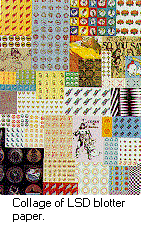 LSD and other pyschotropic drugs (including DMT; previous post) are likely to play a key role in any neurotheology research program. They evoke behaviors and experiences which clearly have much in common with the religious and are experimental design-friendly.
LSD and other pyschotropic drugs (including DMT; previous post) are likely to play a key role in any neurotheology research program. They evoke behaviors and experiences which clearly have much in common with the religious and are experimental design-friendly.
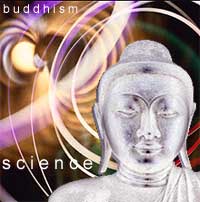 The magazine Utne has a series of articles in its June 2006 issue relating to topics such as neuroethics and neural implants. The one of interest to us,
The magazine Utne has a series of articles in its June 2006 issue relating to topics such as neuroethics and neural implants. The one of interest to us, 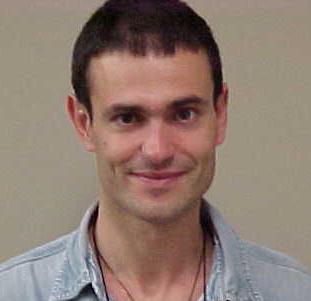 Giuseppe Pagnoni of Emory University (pictured) is doing fMRI studies of zazen (
Giuseppe Pagnoni of Emory University (pictured) is doing fMRI studies of zazen ( Richard Davidson, the Dalai Lama collaborator who scanned Tibetan monks’ brains, was named to the
Richard Davidson, the Dalai Lama collaborator who scanned Tibetan monks’ brains, was named to the 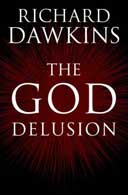 Richard Dawkins’ The God Delusion (
Richard Dawkins’ The God Delusion (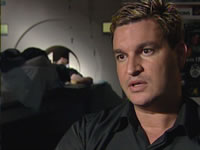 Mario Beauregard has fMRI’d nuns having semi-mystical states and found that a whole range of brain regions (including the right medial orbitofrontal cortex, right middle temporal cortex, right inferior and superior parietal lobules, right caudate, left medial prefrontal cortex, left anterior cingulate cortex, left inferior parietal lobule, left insula, left caudate, left brainstem, and extra-striate visual cortex), demonstrating that mystical experience (or at least the memories of mystical experience these Christian nuns called forth) were involved, thus supposedly disprovnig the “God spot” theory.
Mario Beauregard has fMRI’d nuns having semi-mystical states and found that a whole range of brain regions (including the right medial orbitofrontal cortex, right middle temporal cortex, right inferior and superior parietal lobules, right caudate, left medial prefrontal cortex, left anterior cingulate cortex, left inferior parietal lobule, left insula, left caudate, left brainstem, and extra-striate visual cortex), demonstrating that mystical experience (or at least the memories of mystical experience these Christian nuns called forth) were involved, thus supposedly disprovnig the “God spot” theory. It can be a shock leaving a first-world country and going to a third-world one.
It can be a shock leaving a first-world country and going to a third-world one.
